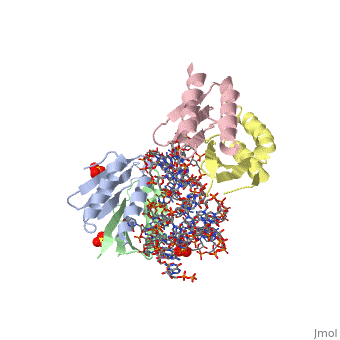Signal recognition particle (SRP) is a ribonucleoprotein which targets specific proteins to the endoplasmic reticulum (ER) in eukaryotes and the plasma membrane in prokaryotes. In eukaryotes SRP binds to the signal sequence of a newly synthesized polypeptide as it emerges from the ribosome. The binding allows for the coupling of the translation process to the translocation process. The SRP targets the nascent protein to the ER by docking into the SRP receptor[1]. The eukaryotic SRP which has GTPase activity, is composed of SRP9, SRP14[2], SRP19[3], SRP54[4], SRP68, SRP72[5] and 7S RNA. The prokaryotic SRP is composed of FFH (SRP54-like) and 4.5S RNA.

